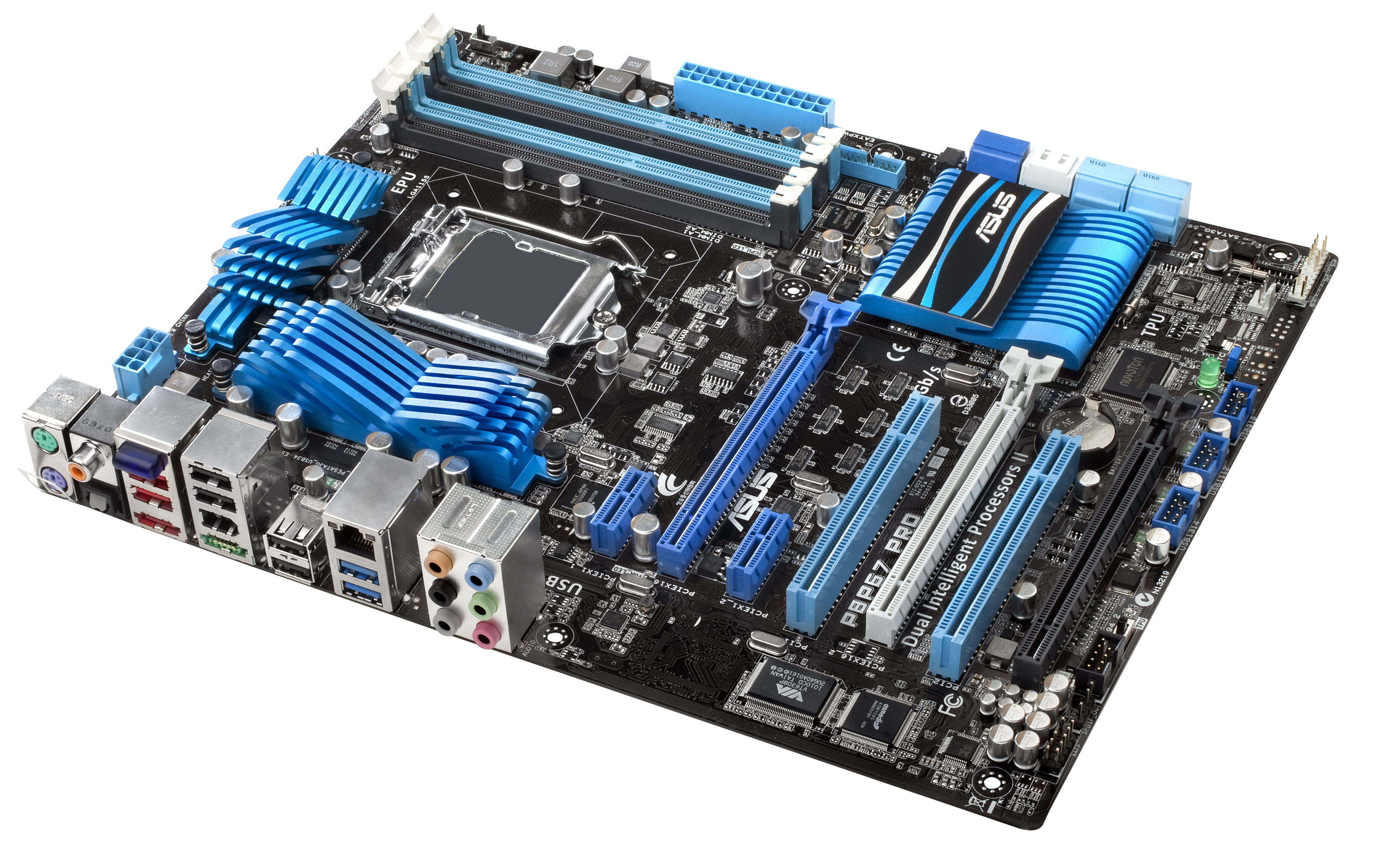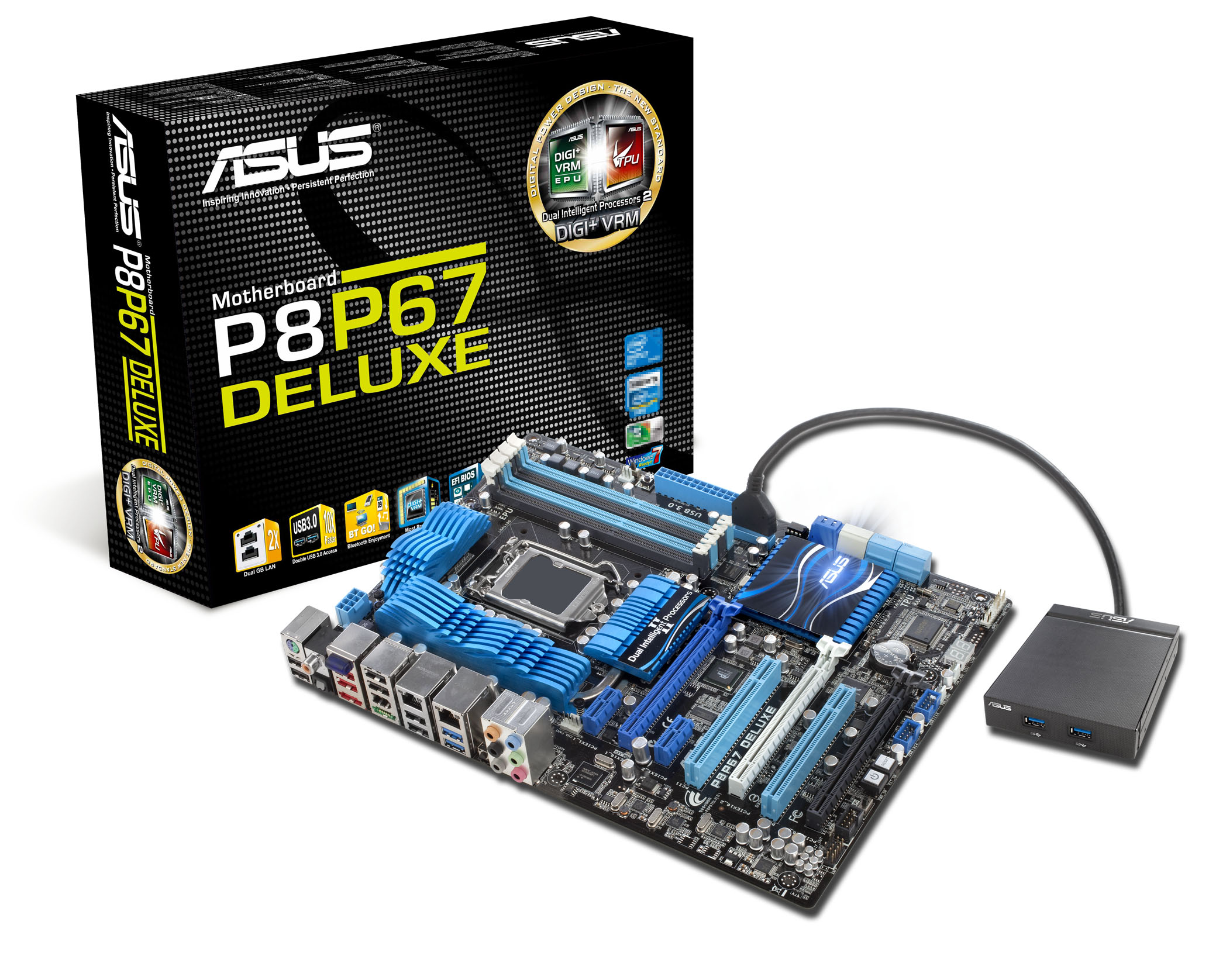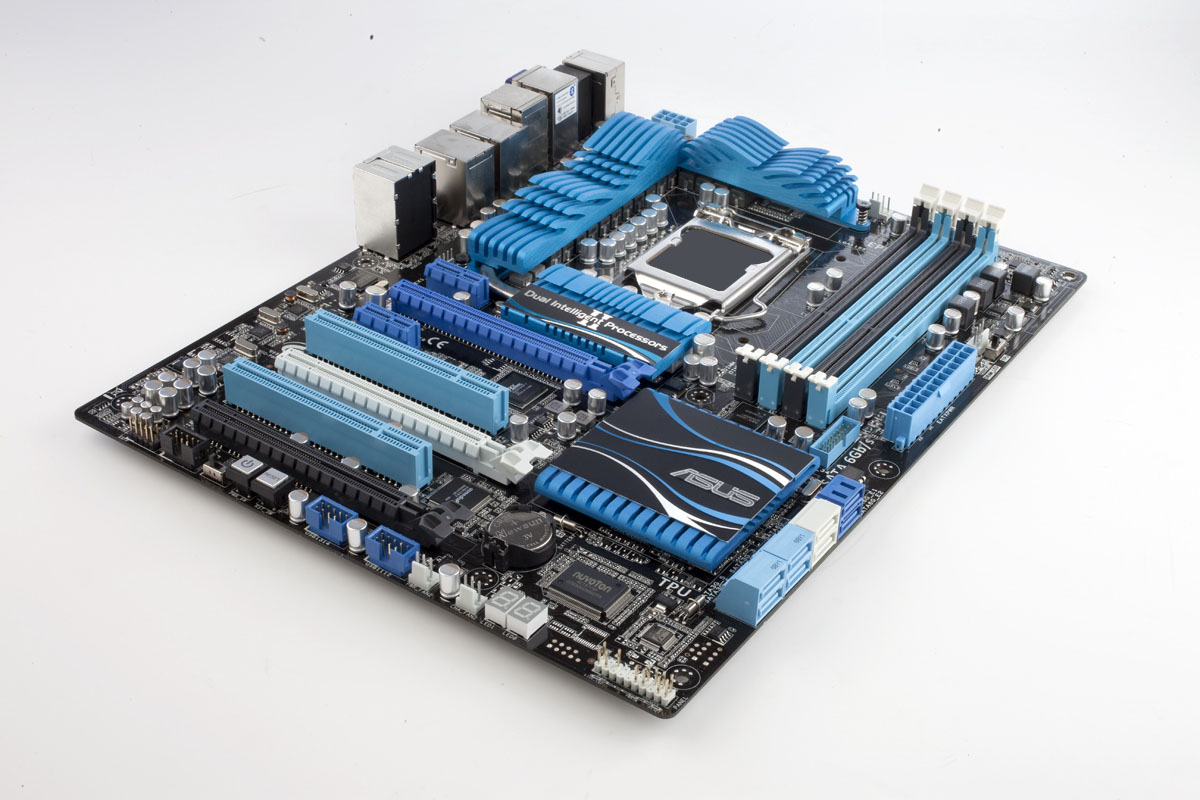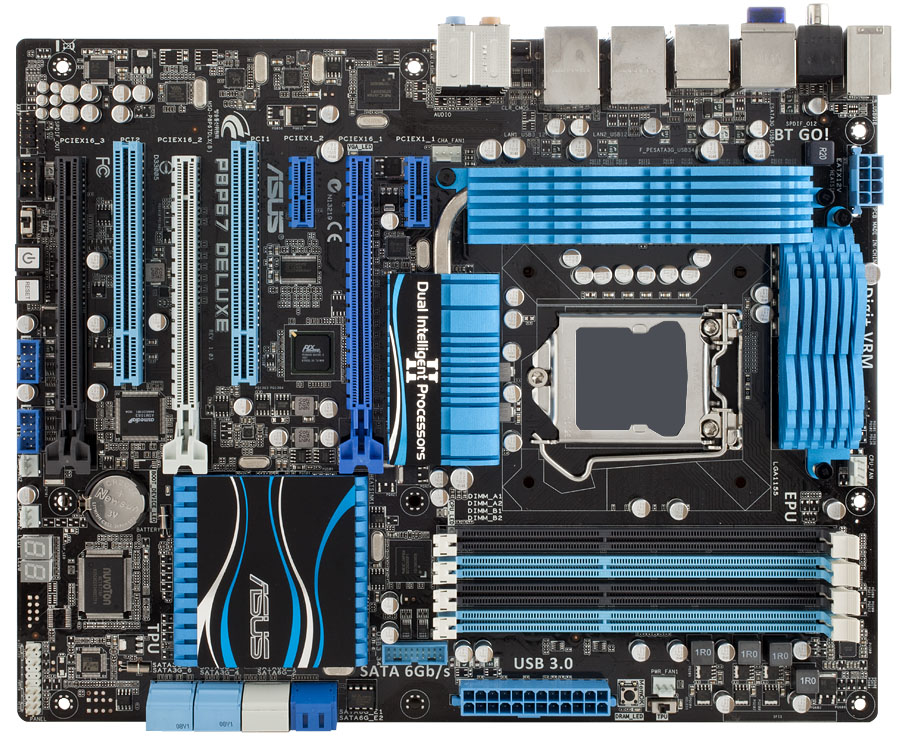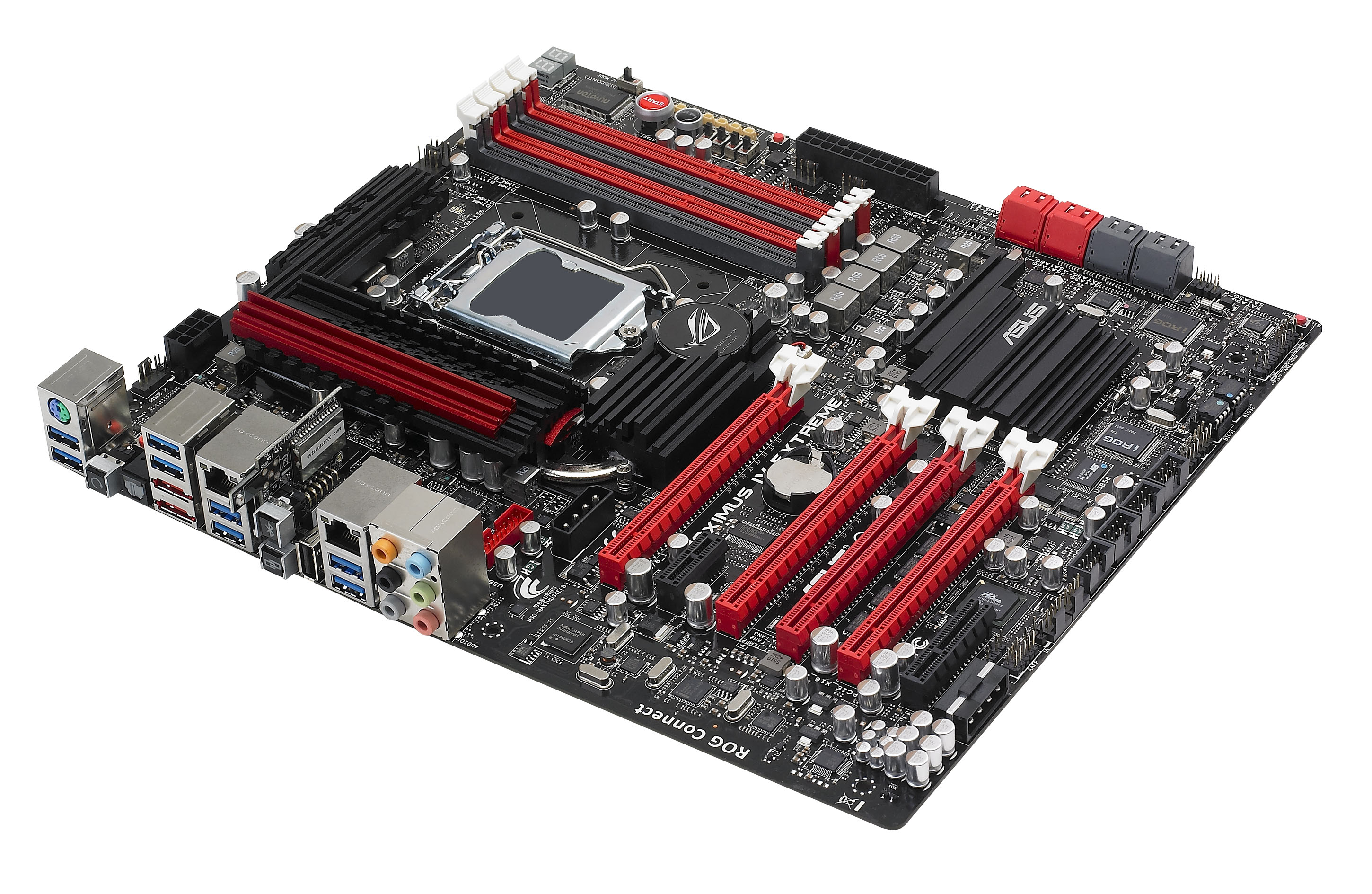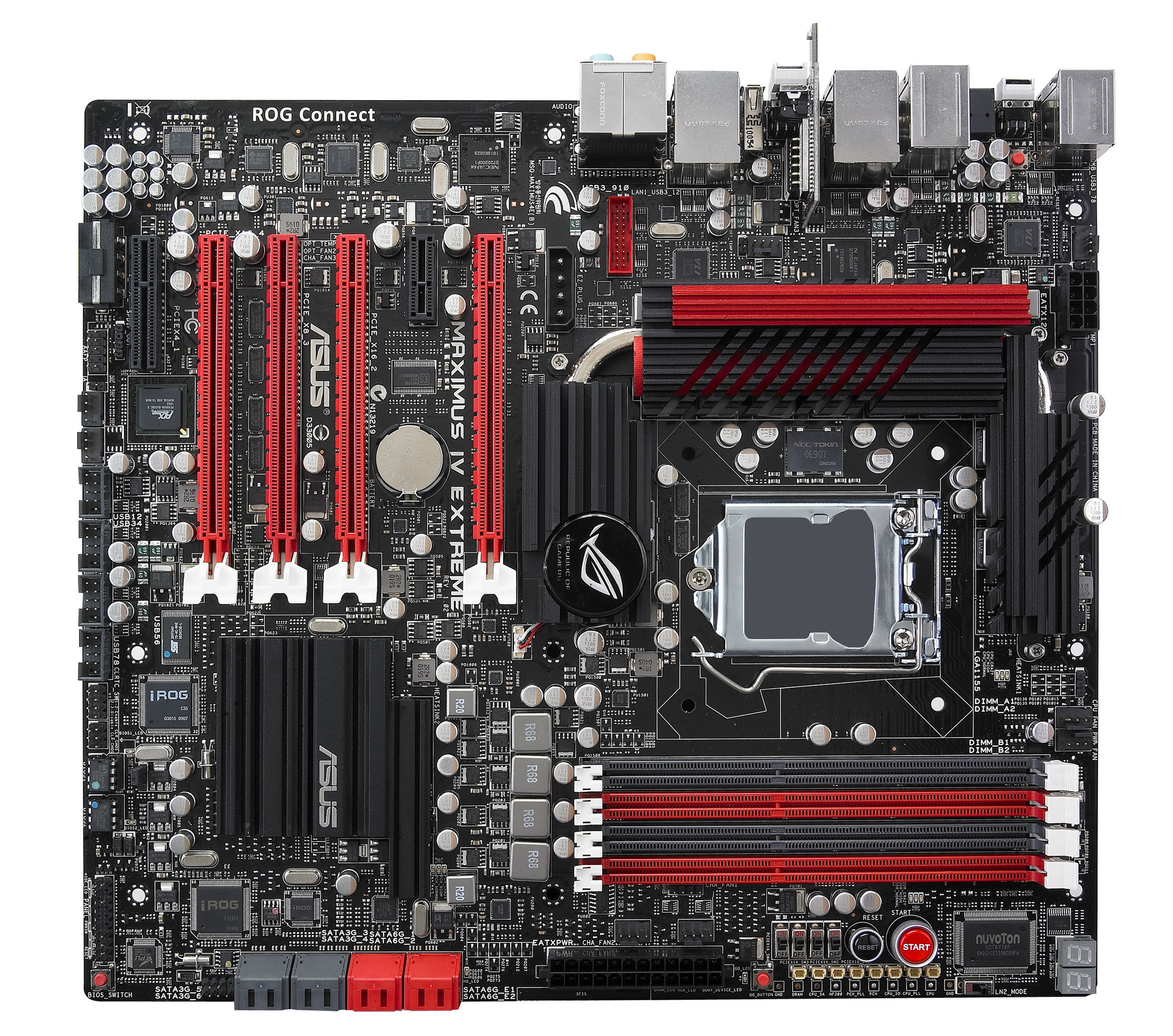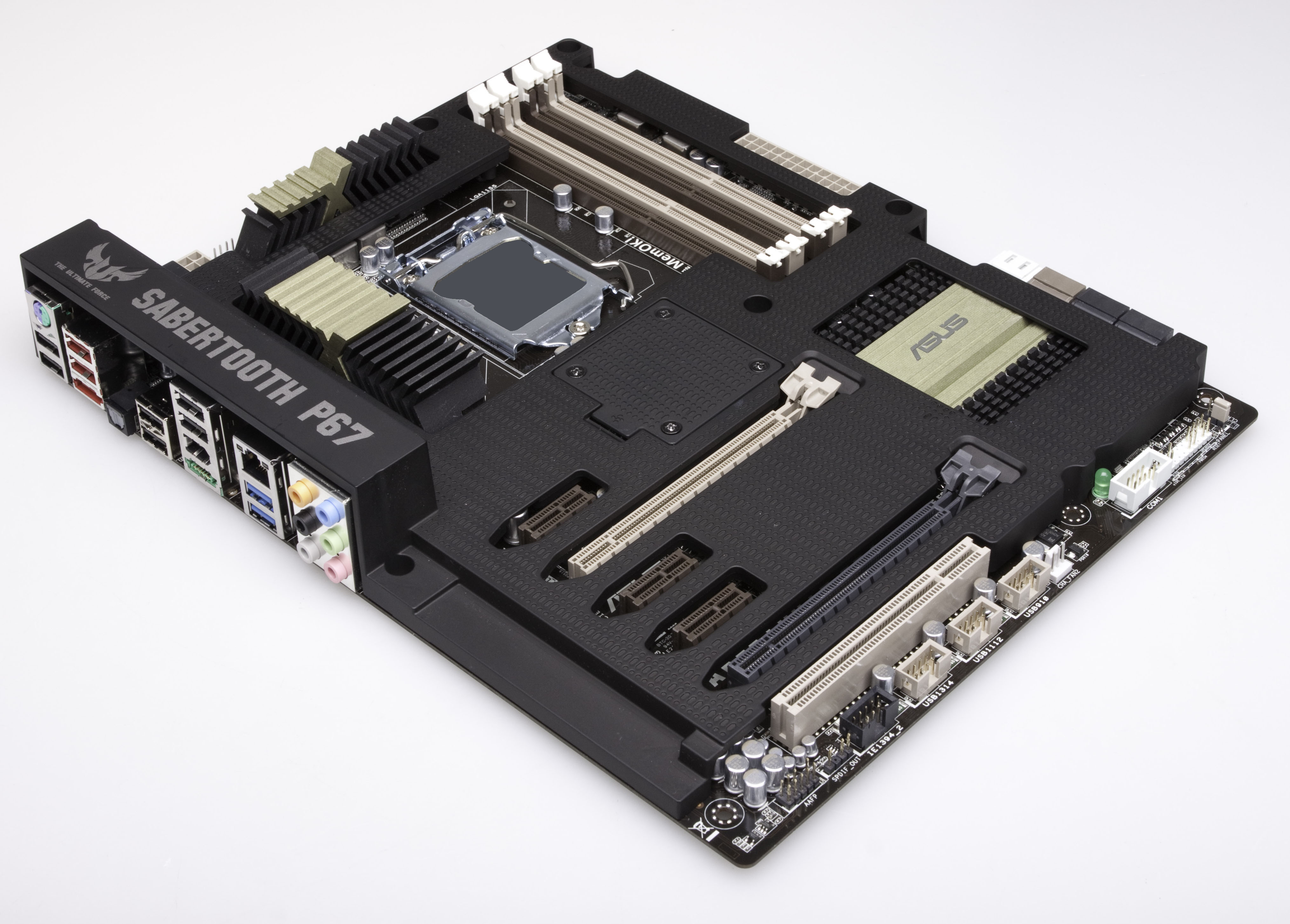ASUS has given us a preview of their new P67 series of motherboards, made for Intel’s newest architecture of processor
ASUS P8P67 Pro
ASUS has given us a preview of their newest lineup of motherboards, due to be launched in 2011. These are made for Intel’s new Sandy Bridge architecture. The motherboards use the new LGA1155 socket, the successor to the Nehalem-compatible LGA1156. The LGA1155 will make its debut at CES 2011, along with the processor it supports. The P67 is one of the many chipsets we have seen for the new architecture. Others include the H67, H65, Q67, and Q65 chipsets.

The P8P67 Pro motherboard comes in a nice blue and black color scheme, and is full ATX sized. It uses passive cooling, with no heatpipes on or around the CPU socket. It also uses a new design of VRM, the ASUS Digi+VRM. The power phases are controlled by ASUS’ EPU microcontroller, found near the processor socket. Users have greater flexibility when adjusting power phases, load-line calibration, and even VRM frequency. This gives overclockers greater potential with the new chipset.
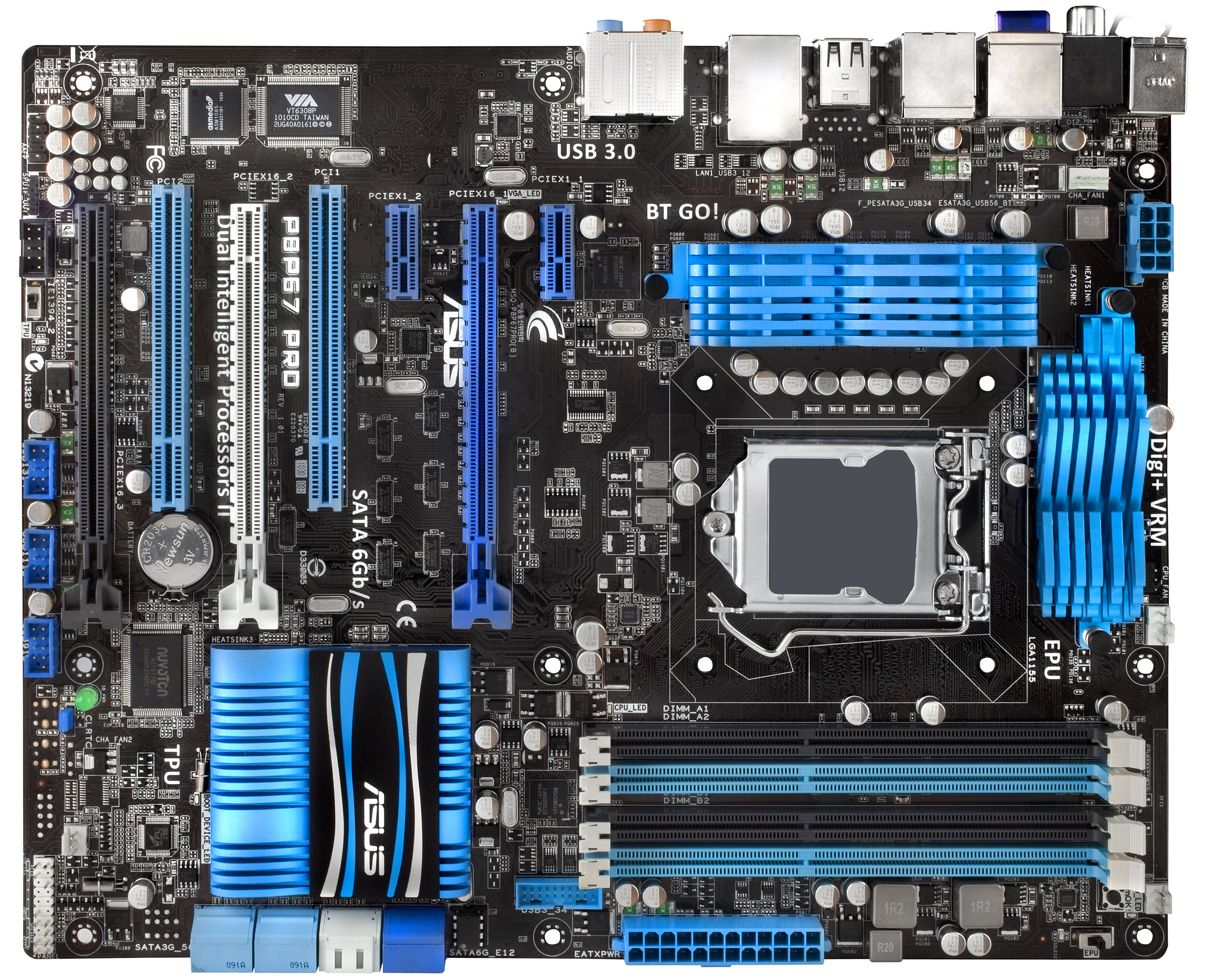
The board supports dual-channel DDR3 memory, so we expect the maximum supported frequencies to be higher. The board also features 3x PCI-E x16 slots, though we are not sure how the speeds will configure during SLI/CrossFire usage. The speed may decrease to x8/x8 when in SLI/CrossFire. The board also has two PCI-E x1 slots, and two PCI slots, good for hardware such as dedicated sound cards.
The board also has the words “BT GO!” near the heatsink above the processor. The BT GO! feature of the ASUS boards uses Bluetooth technology to enable users to interact with their computers using a smartphone. According to ASUS, all their new ATX boards will feature onboard Bluetooth technology as a standard feature. Users will be able to transfer files such as music, photos, videos, and more.
The board has the words “Dual Intelligent Processors II” stamped on the PCB directly below the second PCI-E x16 slot. This indicates that the board uses ASUS’ second generation of Dual Intelligent Processor design. According to ASUS, the first design increased performance and cut down on power usage by a significant amount. We are eager to see how the new design will improve on this.
The P8P67 Pro does not have any video outputs, because the board doesn’t have integrated graphics. All P67 chipset boards require a dedicated graphics card. The I/O panel at the back has two PS/2 ports, for keyboards and mice, an S/PDIF Out port, a Bluetooth transmitter, 6x USb 2.0 ports, 2x USb3.0 ports, an IEEE 1394a port, two eSATA ports, a Gigabit ethernet port and eight-channel audio ports.
ASUS P8P67 Deluxe
The ASUS P8P67 Deluxe is one step up from the P8P67 Pro. This board is more expensive than the P8P67 Pro. It features a very elaborate heatsink for the MOSFETs and chips on the PCB. The board uses a 16+2 phase digital power design. It comes with a 3.5 inch USB 3.0 extension unit, which can be attached to a port near the EATX power connectors. The Deluxe supports SATA 6Gb/s, and has eight SATA ports on the far end of the PCB. Four of these are SATA 3Gb/s, and two are SATA 6Gb/s. We are unsure of the final two. Unlike the Pro, however, this board includes onboard power and reset switches, a MemOK! button, TPU switch, POST code LED display, and Clear CMOS switch on the rear I/O panel.
Like the P8P67 Pro, this board supports dual-channel DDR3 memory, and has three PCI-E x6 expansion slots. The board’s South Bridge heatsink is flash, but appears to come very close to the first two PCI-E x16 slots. We cannot yet anticipate whether this would cause problems for users. This board retains the blue-white-black theme of the P8P67 series.
The Deluxe also uses the ASUS Dual Intelligent Processors II design, and the BT GO! Bluetooth feature, which will be standard on all ASUS P67 boards. Like the Pro, the Deluxe has two PCI slots and two PCI-E x1 slots, though the first PCI-E x1 slot comes a bit close to the North Bridge heatsink.
The Deluxe’s I/O panel is a bit different from that of the Pro. Instead of two PS/2 ports, the Deluxe only has one, and it only has two USB 2.0 ports. It also has two more USB 3.0 ports than the Pro, an extra Gigabit Ethernet port, and the Clear CMOS button, which is situated slightly farther back so it is not pressed accidentally
ASUS Maximus IV Extreme
The Maximus IV Extreme is the first ASUS Republic of Gamers (ROG) board for the Sandy Bridge architecture.
It features the same black and red color scheme of the ROG series, and is well designed. It has four dual-channel DDR3 memory slots, and a whopping four PCI-E x16 expansion slots. The Nvidia NF200 chip on this board increases the number of PCI-E lanes to 32. This means users can run dual-SLI in a x16/x16 configuration, or triple-SLI in a x16/x8/x8 configuration. The board also has one PCI-E x1 and one PCI-E x4 slot. The board supports the ROG Connect feature, which allows users to connect two different computers and receive real-time POST readouts, and achieve overclocking control from the second computer.
The board has eight voltage probe points along the far edge of the PCB. These are for monitoring DRAM, CPU, CPU PLL, and other voltages. Above these are four switches allowing users to quickly enable or disable the four PCI-E x16 slots on the board. Next to these switches is a switch marked “LN2_MODE.” This is for users who wish to use liquid nitrogen cooling systems for their CPU. In the lower right hand corner is an LED display. The board has 8x SATA ports, four of which are SATA 3Gb/s, and four of which are SATA 6Gb/s. In the lower left hand corner is a BIOS switch, which allows users to switch between the two BIOS chips on the board. One interesting fact to note is that unlike the Rampage series of ROG boards, the Maximus IV Extreme uses three-pin fan headers instead of four-pin ones. The Clear CMOS switch is rather inconveniently located on this board, stuck between the capacitors and I/O ports in the upper right hand corner.
ASUS Sabertooth P67
Finally, we have the ASUS Sabertooth P67 board. The first thing we see about this board is that it has a unique “tactical vest” on it. According to ASUS, this helps remove heat from the board components. The board has apparently undergone (and survived) server grade testing. It features nine distinct real-time temperature readouts, with instant fan speed adjustments to prevent a burnout. ASUS also includes a place to mount an additional fan for those who watercool their CPU but want more airflow in the system.
 Bjorn3D.com Bjorn3d.com – Satisfying Your Daily Tech Cravings Since 1996
Bjorn3D.com Bjorn3d.com – Satisfying Your Daily Tech Cravings Since 1996
